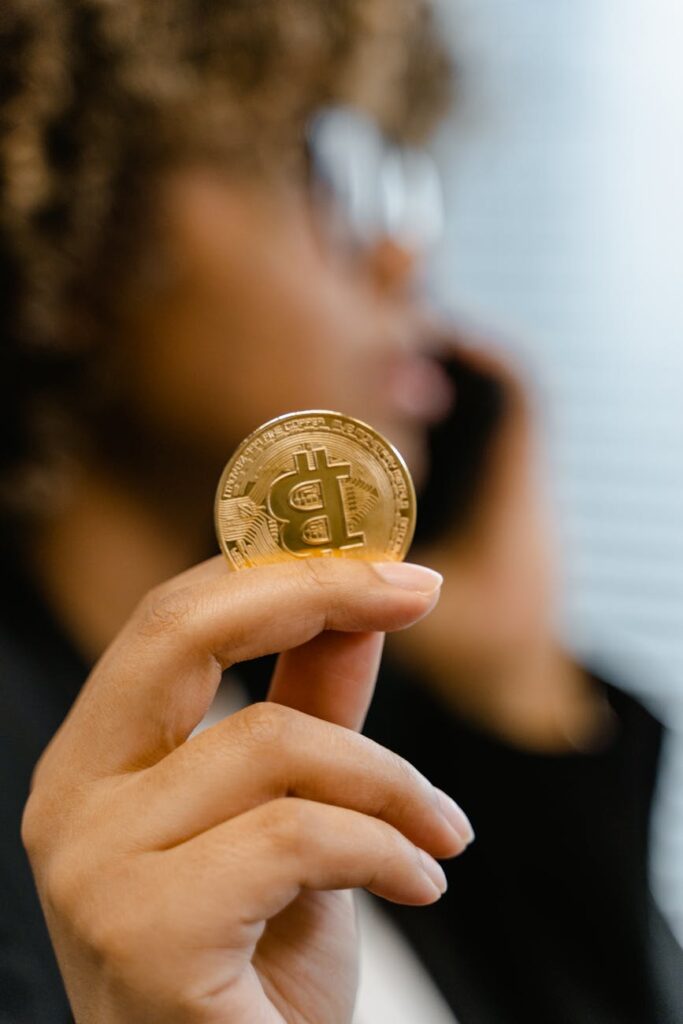When the Ship of State Starts Sinking, Is Crypto the Life Raft?
Picture this: you wake up one morning and the money in your bank account is suddenly worth 20% less. Your government, drowning in debt it can no longer pay, has resorted to printing money with reckless abandon. The value of your life’s savings is evaporating. It’s a terrifying scenario, but it’s the reality of a sovereign debt crisis. For decades, the standard advice was to flee to assets like gold, Swiss francs, or the U.S. dollar. But a new contender has entered the arena, promising a digital fortress against economic collapse. The big question on everyone’s mind is: can we truly consider crypto a safe haven?
Key Takeaways
- A sovereign debt crisis occurs when a country can’t repay its debts, leading to currency devaluation, high inflation, and economic turmoil.
- Crypto’s proponents argue its decentralized, borderless, and limited-supply nature makes it an ideal hedge against government financial mismanagement.
- Critics point to extreme volatility, regulatory uncertainty, and practical usability issues as major hurdles for crypto’s safe-haven status.
- Real-world examples from countries like Argentina and Venezuela show citizens are using crypto to escape local currency collapse, but not without significant risks.
- Ultimately, crypto is not a guaranteed safe haven but a high-risk, high-reward alternative that may have a place in a diversified strategy for some individuals in crisis zones.
First Off, What Exactly Is a Sovereign Debt Crisis?
Let’s demystify this. A sovereign debt crisis isn’t some abstract concept for economists to debate. It’s real, and it’s devastating. At its core, it happens when a national government can’t pay back its debts. Think of it like a person maxing out all their credit cards and defaulting on their mortgage. The consequences are just on a massive, country-wide scale.
When this happens, a government gets desperate. They might slash public services, raise taxes to impossible levels, or—and this is the big one—they start printing more money to pay their bills. This flood of new cash instantly devalues the currency already in circulation. Your savings, your salary, everything denominated in that currency, loses its purchasing power. This is hyperinflation. Suddenly, a loaf of bread costs a wheelbarrow full of cash. Capital controls are often imposed, meaning you’re legally blocked from moving your money out of the country. You’re trapped. It’s a complete financial nightmare.

The Case for Crypto: A Digital Ark in a Fiat Flood
So, where do you turn when your own government’s currency is collapsing? This is where the argument for a crypto safe haven gets really compelling. The core ideas behind assets like Bitcoin seem tailor-made to counteract the problems of a debt crisis.
It’s Nobody’s and Everybody’s: The Power of Decentralization
Unlike the U.S. dollar, which is controlled by the Federal Reserve, or the Argentine peso, controlled by the Central Bank of Argentina, Bitcoin and many other cryptocurrencies don’t answer to any single authority. They run on a global network of computers. This means no government can decide to print more of it to solve their debt problems. No central bank can freeze your account or block your transaction. In a world of capital controls, this censorship resistance is a powerful, liberating feature. Your assets are yours, secured by cryptography, not political promises.
Digital Scarcity: The ‘Digital Gold’ Narrative
One of the biggest selling points for Bitcoin is its hard-coded scarcity. There will only ever be 21 million Bitcoin. Ever. That’s it. This is in stark contrast to fiat currencies, which can be printed into oblivion at the whim of a government. This predictable, limited supply is why you hear Bitcoin constantly compared to gold. Gold is valuable because it’s scarce and hard to mine. Bitcoin shares that digital scarcity. When your local currency is being devalued by inflation, holding an asset with a fixed supply is incredibly attractive. It’s a potential store of value that can’t be diluted away by poor fiscal policy.
Money Without Borders
Imagine trying to flee a collapsing economy with your life savings. Carrying physical gold is risky. Getting your money out of a domestic bank account might be impossible due to capital controls. With crypto, all you need to remember is a seed phrase—a string of 12 or 24 words. You can cross any border on Earth and, with an internet connection, access your wealth. This borderless, permissionless nature makes it a powerful tool for preserving capital when you need to get out of Dodge. You don’t need a bank’s permission. You don’t need a government’s approval. You just need the internet.
The Cold, Hard Reality: Crypto Is No Silver Bullet
The vision is compelling, isn’t it? A decentralized, scarce, borderless asset. But if you’re thinking of swapping all your savings for crypto at the first sign of trouble, you need to pump the brakes. The reality is far more complicated and a lot riskier.
Let’s Talk About Volatility. No, *Really* Talk About It.
This is the elephant in the room. A massive, stomping, unpredictable elephant. While your national currency might be losing 20% of its value in a year, Bitcoin can lose that much in a single afternoon. Sometimes for no apparent reason. Can an asset that drops 50% or more in a few months truly be called a ‘safe haven’? For someone trying to preserve their dwindling wealth, this level of volatility can be just as destructive as hyperinflation. Swapping a guaranteed, slow loss for a potential, rapid loss isn’t a great trade-off. It’s a gamble, not a sanctuary.
“Calling crypto a ‘safe haven’ is a stretch. It’s more like a high-speed escape pod with no steering wheel. It might get you away from the explosion, but you have no idea where you’ll end up, or in how many pieces.”
The Long Arm of the Law
While crypto is decentralized, its on-ramps and off-ramps are not. You still need exchanges like Coinbase or Binance to convert your crumbling fiat into crypto, and vice-versa. These exchanges are centralized companies that must comply with government regulations. A desperate government can—and will—crack down on them. They can force exchanges to halt withdrawals, report user activity, or shut down entirely. We’ve seen it in countries around the world. So while your crypto might be safe on the blockchain, accessing it and converting it into usable money can become a nightmare precisely when you need it most.
The Usability Gap
Let’s be practical. In the middle of an economic crisis, you need to buy food, pay for shelter, and get gas. Can you do that with crypto? In most places, the answer is still a resounding no. The infrastructure isn’t there. You can’t just walk into a local grocery store and pay for milk with Ethereum. You’d need to convert it back to the very same devaluing local currency (if the exchanges are even working), incurring fees and dealing with wild price swings along the way. For daily survival, this is a massive hurdle. Gold has the same problem, but at least it’s a universally understood asset with a centuries-long track record.

Lessons from the Front Lines: Argentina and Venezuela
This isn’t just theory. People in countries facing chronic economic instability are already using crypto. In Argentina, where inflation has been sky-high for years, citizens have been turning to crypto, particularly stablecoins like USDT (Tether) which are pegged to the U.S. dollar, to protect their savings. It’s a way to unofficially ‘dollarize’ their wealth and escape the peso’s collapse when formal access to USD is restricted. They aren’t necessarily buying Bitcoin to speculate; they’re using crypto out of sheer necessity.
Similarly, in Venezuela, crypto has been used to receive remittances from abroad and to conduct business, bypassing a worthless local currency and a broken banking system. These examples show that crypto does have a utility in crisis. However, it’s a messy, high-stakes utility. Scams are rampant, regulatory risks are high, and the aforementioned volatility is a constant threat. It’s a lifeline, but a very frayed one.
How Does a Crypto Safe Haven Stack Up Against the Classics?
So, how does this new digital contender compare to the old guards of wealth preservation?
- Gold: The original safe haven. It’s tangible, has a 5,000-year history, and isn’t subject to the same digital risks as crypto (like hacking or network failure). Its main drawbacks are portability and storage. It’s hard to move large amounts of gold across borders. Crypto wins hands-down on portability.
- U.S. Dollar (USD): For most of the world, the USD is the ultimate safe haven. It’s the global reserve currency and is incredibly liquid. However, it’s still a fiat currency subject to inflation and U.S. government policy. If the debt crisis is a global one, even the dollar might not be safe. Crypto offers an escape from the entire fiat system, which is its unique value proposition.
- Swiss Franc (CHF): Historically, the Swiss franc has been a bastion of stability, backed by a politically neutral country with a strong economy. It’s a fantastic option, but you still need access to the traditional banking system to hold it, which can be a problem during a crisis with capital controls.

Conclusion: A High-Risk Hedge, Not a Safe Harbor
So, can crypto offer a safe haven during a sovereign debt crisis? The honest answer is: it’s complicated.
Crypto is not a safe haven in the traditional sense, like gold or the Swiss franc. It lacks the stability, track record, and regulatory clarity to be a true ‘set it and forget it’ safety net. Its wild volatility can be just as damaging as the inflation it’s meant to protect you from.
However, it would be foolish to dismiss its role entirely. In the face of hyperinflation, capital controls, and a complete breakdown of trust in local institutions, crypto’s core features—decentralization, scarcity, and borderless transportability—offer a powerful and unique alternative. For individuals in the most desperate situations, it can be a functional, albeit risky, tool for survival and capital preservation.
Think of it less as a cozy, safe harbor and more as a high-tech, experimental lifeboat. It might just save you, but it’s going to be a terrifyingly bumpy ride, and there’s no guarantee you’ll reach the shore. It is a powerful hedge against a specific type of failure—the failure of a government’s promise. And in a world of mounting global debt, that’s a hedge that looks more and more interesting every day.
FAQ
1. Is Bitcoin or Ethereum better as a safe haven?
Bitcoin is generally considered the stronger candidate due to its fixed supply of 21 million coins, earning it the nickname ‘digital gold’. Its primary use case is as a store of value. Ethereum has an inflationary model (though it has become deflationary at times) and is more focused on being a decentralized computing platform. For pure wealth preservation against inflation, the argument for Bitcoin is stronger.
2. What are stablecoins and are they a safer option?
Stablecoins are cryptocurrencies pegged to a stable asset, usually the U.S. dollar (e.g., USDC, USDT). They are designed to avoid the volatility of assets like Bitcoin. In a country with a collapsing local currency, holding a USD-backed stablecoin can be an excellent way to preserve wealth. However, they carry their own risks, primarily ‘counterparty risk’—you are trusting the company that issues the stablecoin to actually have the reserves to back it up.
3. If my country’s internet gets shut down, is my crypto gone?
No, your crypto is not gone. Your assets exist on the global, decentralized blockchain, not on your device. As long as the global Bitcoin or Ethereum network is running, your crypto is safe. You would simply be unable to access or transact with it until you could get an internet connection, perhaps by traveling to a neighboring country.


